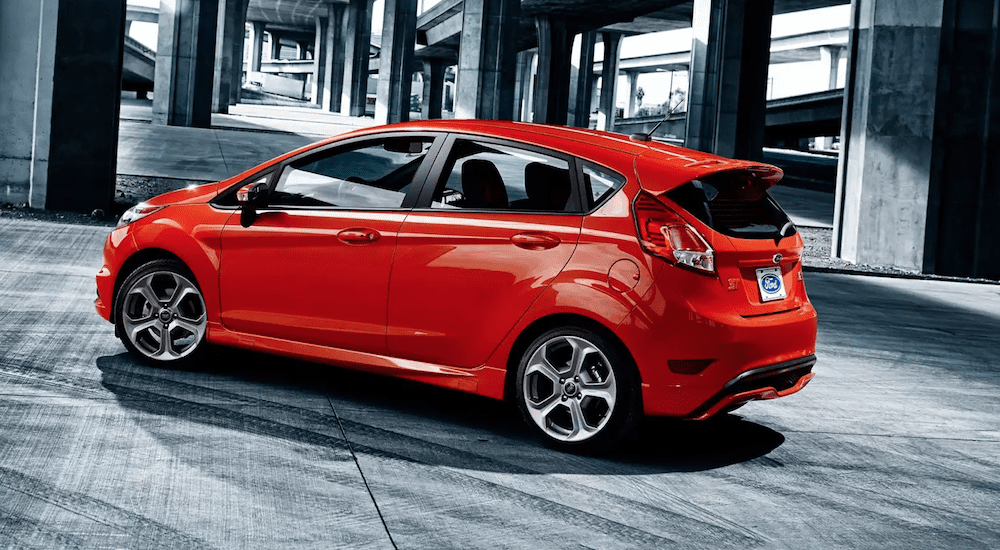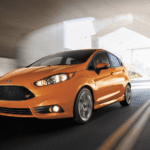There are two common automotive trends that happen as the new year rings in: everything old is new again and everything new is, well, new. The new year is a transitional period. Dealerships push special deals on the previous year’s stock to make room for the new. At the same time, they drum up the latest and greatest to get the new stock rolling. It’s a pretty standard routine, except for when you aren’t sure if you will have a new model stock for the new year.
That is the current predicament of Ford’s small-yet-popular Fiesta, a subcompact, supermini sedan/hatchback that has been in production in some form since the early 1970s. The car has made a name for itself on rally circuits, seen its popularity rise overseas, and did reasonably well in the US since 2010.
However, its fate in the US market is now in question. Rumors of once again taking the line out of the US have been swirling around auto shows and blogs for the past year. Dealerships have little to no mention of a 2018 Ford Fiesta. So what is going on with this tiny racer? Should you expect the 2018 Ford Fiesta near you anytime soon?
To date, there is no official answer to these questions, but all the indications and rumors do seem to suggest one likely possibility: don’t count on a 2018 Fiesta in the US. If you are somewhere in Asia or Europe, you can rest easy tonight knowing your precious 2018 Fiesta will be waiting on a lot sometime between now and the near future depending on where you live. For American buyers, however, things are likely to be drastically different.
Let’s get one thing straight: the Ford Fiesta is a good car. Embracing Ford’s long history of offering more than the vehicle’s size may suggest, the Fiesta packs a lot of efficient, EcoBoosted power under the hood. Countless customers have grown to love the sports-oriented ST model for years. One thing that is for sure is when you buy a new Fiesta, you aren’t driving a fancy lemon right off of the lot.
So why may Ford be taking the Fiesta off of the table for its American customers? The normal reasons: poor sales and little revenue. To understand why a good, little car would have these problems, you need to know where the Fiesta comes from in the first place.
The Fiesta’s Introduction in America
The Ford Fiesta was born out of a time where smaller vehicles were simply more attractive. The 1970s played host to one of the most influential periods of automotive design: the gas crunch. When fuel supplies began to strain and gas stations started to feel the pressure, auto manufacturers quickly realized that something needed to change. It’s basic physics: larger vehicles = larger fuel demands. People won’t buy a larger vehicle if they can’t even afford the gas to drive it.
Thus, the first generation Ford Fiesta was born. Call it a “subcompact” or “supermini,” it doesn’t matter. This car started off small. The lower price point, higher fuel economy, and Ford’s inherent built quality made this car an attractive alternative to the larger, heavier vehicles that had defined the automotive style of the previous few decades. Its design maximizes the interior space as much as possible so it even retained some of the comfort feeling of larger vehicles.
Unfortunately, the trend for small didn’t last long in the US. Compared to other international markets, US automotive consumers have always skewed towards the larger end. Trucks and SUVs aside, family-sized sedans and station wagons are more in line with the wants and needs of American customers. “Bigger is better” doesn’t necessarily encompass all the details that explain this trend, but it’s a start. Simply put, small cars have never enjoyed the same popularity as their larger cousins in this market.
The Ford Fiesta quickly felt this reality by the end of the 1970s. With gas readily flowing again and prices lowering, it was inevitable that the small subcompact market would feel the effects. Sales for the Fiesta began to shrink until the costs of importing the foreign-made car were too large for the dwindling sales revenue to actually cover. By the end of 1980, the Fiesta was removed from the US market.
An American Rebirth
That wasn’t the end of the Ford Fiesta. Even though new models of the car didn’t roam the streets in the US, it did continue to see a growing popularity and success overseas. Over the next thirty years, it became a staple of a larger acceptance of smaller, more fuel-efficient cars in Europe and Asia. In that time, the car went through five different generations that all retained the same small-but-mighty approach Ford originally based the design on.
In 2010, the sixth generation became the model’s first global car. Expanding the market presence of the car, Ford decided to take a chance on the US once again. In part, this was a way to introduce the company’s B-car platform. This is a joint venture between Ford and Mazda which streamlined the manufacturing of many Ford/Mazda subcompact cars to make production easier and more adaptive.
Popularity for the little car continued to grow over the next few years. The Ford Fiesta ST took the prime spot of this rising popularity. The sports model influenced by the Fiesta’s rally line used a 1.6L Ti-VCT engine to prop the car up to speeds of around 136 miles per hour. Taking home several accolades, the new take on small performance seemed to solidify the car’s presence on the global stage.
Diminishing Sales & Current Status
Unfortunately, that wasn’t quite the case for the Fiesta. Over the past couple of years, the car has struggled to make a mark on the less-than-stellar subcompact market. In many ways, this is a repeat of the circumstances that led to the Fiesta’s removal from the US automotive market the first time.
Ford representatives have reported over the last year that the costs of importing the vehicle into America are becoming too prohibitive given the decrease in revenue. With other alternatives, including the 2018 Ford Ecosport scheduled to fill the Fiesta’s spot in the lineup, it’s now looking like there is simply no more room for it.
Information is still scarce, but many automotive blogs have reported that Ford is unlikely to introduce the 2018 Ford Fiesta to the US market. At the very least, there is likely to be a longer wait as Ford monitors the performance of its existing lines, including the Ecosport.
Still, there is some hope. The Ford website lists the 2018 Ford Fiesta as an option on the model page’s menu. Unfortunately, it leads directly back to the 2017 model page with no indication of any updates or differences.
Is Ford just keeping a placeholder up in case the 2018 Fiesta does get to stay?
Only time will tell.




